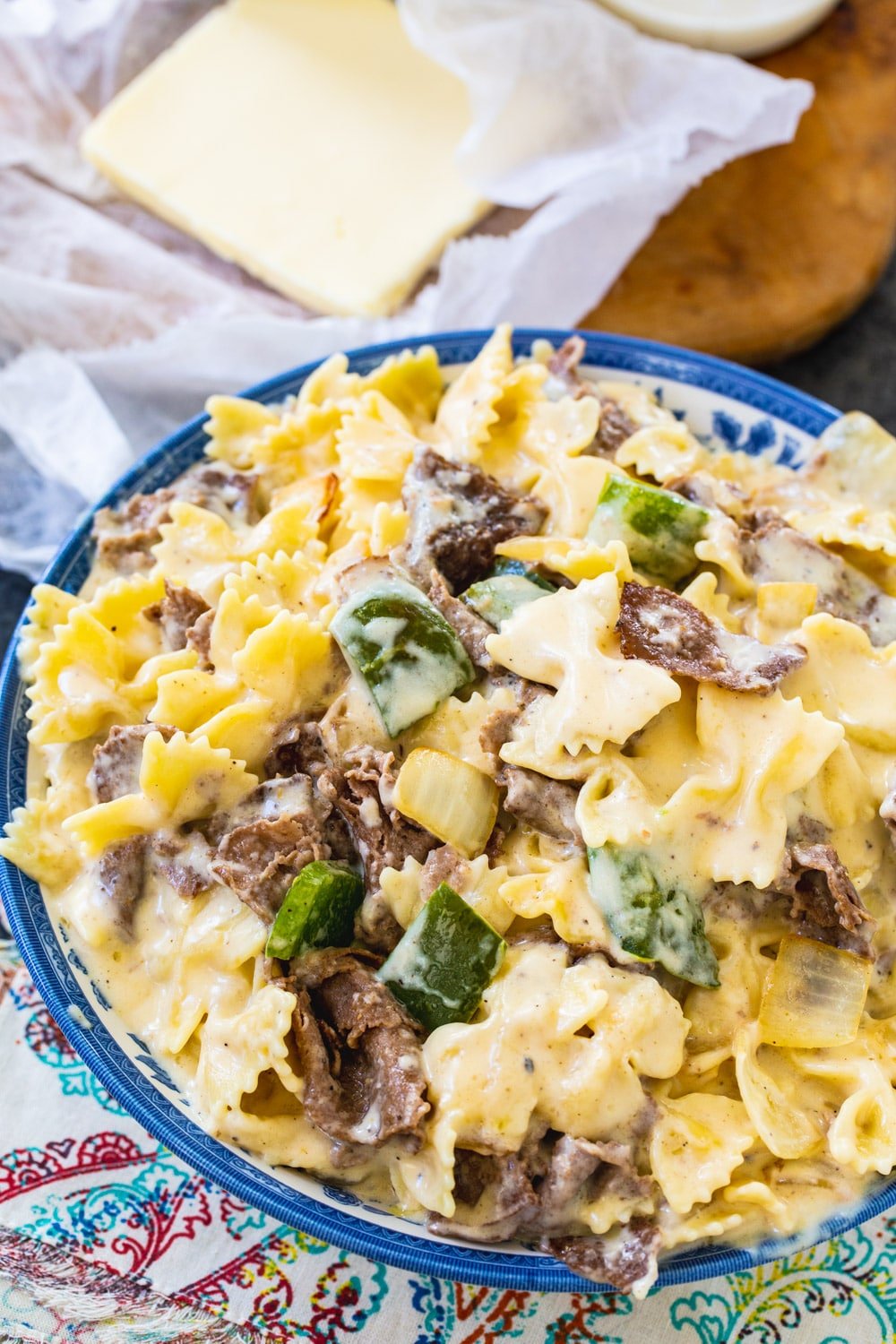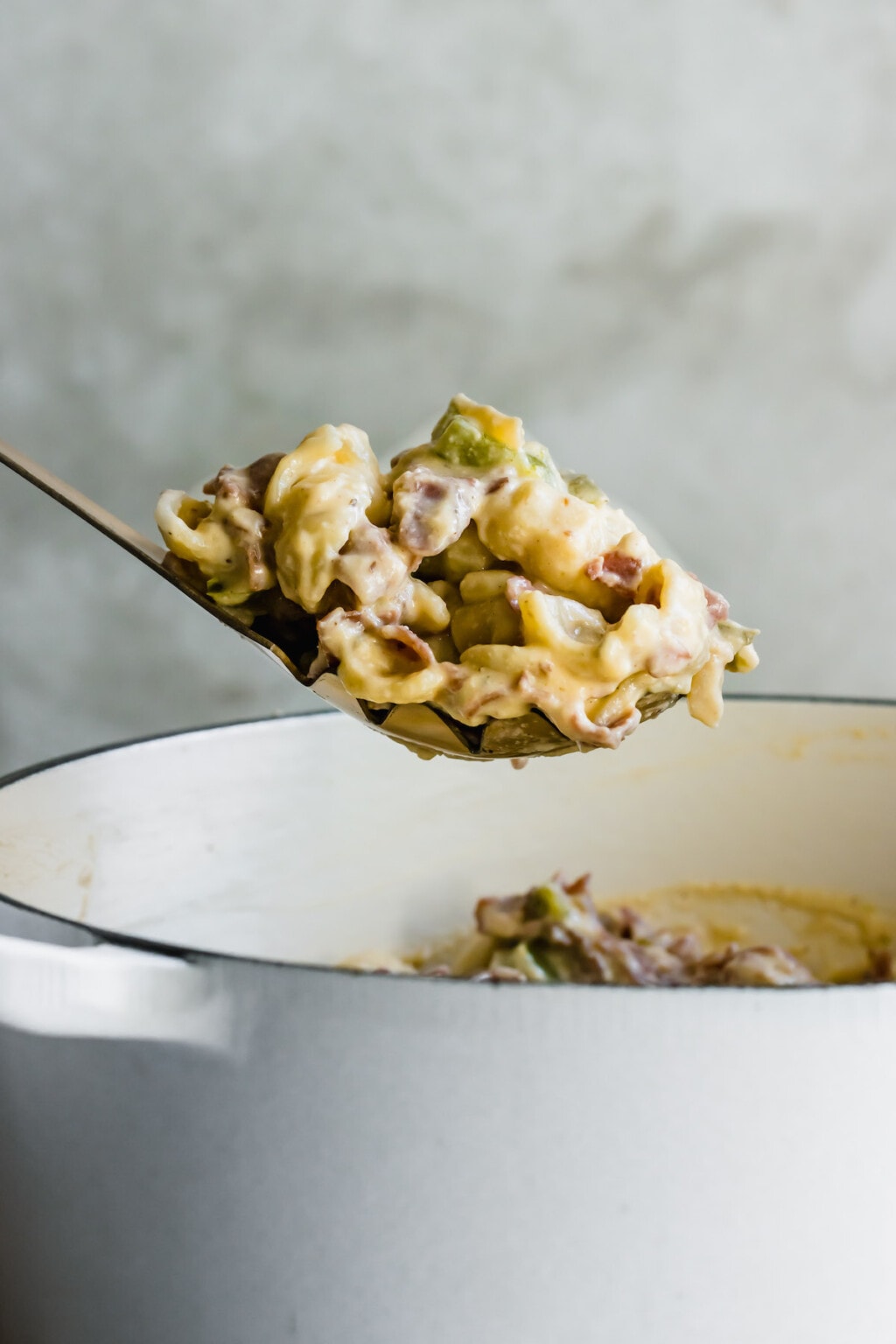Why Philly Cheesesteak Mac And Cheese Is The Ultimate Comfort Food
**Listen up, foodies!** If you're someone who craves bold flavors and comfort in every bite, then let me introduce you to a culinary masterpiece that’s shaking up the food scene: Philly Cheesesteak Mac and Cheese. It’s not just another dish; it’s a flavor explosion that combines the best of two iconic comfort foods. Imagine creamy mac and cheese wrapped in the smoky, savory goodness of a classic Philly cheesesteak. Now, THAT'S what I call a game-changer. Whether you're a fan of Philly steak sandwiches or cheesy pasta, this fusion is bound to hit the spot.
This isn’t just another recipe trend. It’s a celebration of two legendary American dishes coming together in perfect harmony. The Philly cheesesteak, with its tender beef, gooey cheese, and sautéed onions, meets the ultimate crowd-pleaser—mac and cheese. Together, they create a dish that's rich, indulgent, and oh-so-satisfying. So, why should you care? Because it’s more than food—it’s an experience that your taste buds won’t forget.
Now, if you’re thinking this sounds too good to be true, stick around. In this article, we’ll dive deep into what makes Philly Cheesesteak Mac and Cheese so special. We’ll explore its origins, the best ways to make it at home, and why it’s become such a big deal in the culinary world. If you’re ready to level up your dinner game, you’ve come to the right place. Let’s get started!
Read also:Faster Faster Until The Thrill Of Speed The Ultimate Rush
Table of Contents
- The Origins of Philly Cheesesteak Mac and Cheese
- Key Ingredients You Need to Know
- Step-by-Step Recipe Guide
- Creative Variations to Try
- Nutritional Breakdown and Health Tips
- Perfect Pairings for Your Meal
- A Brief History of the Philly Cheesesteak
- Why It’s So Popular Today
- Insights from Culinary Experts
- Wrapping It Up
Where Did Philly Cheesesteak Mac and Cheese Come From?
Alright, let’s talk history. Philly Cheesesteak Mac and Cheese didn’t just appear out of thin air. This dish is the love child of two iconic American foods: the Philly cheesesteak and mac and cheese. The cheesesteak, originating from Philadelphia in the early 20th century, quickly became a staple of American cuisine. Combine that with mac and cheese, a dish that’s been comforting people since the 18th century, and you’ve got pure magic.
So, how did these two classics come together? Well, it all started with food bloggers and chefs looking to innovate. Someone, somewhere, thought, "Hey, why not mix the savory goodness of a cheesesteak with the creamy comfort of mac and cheese?" And boom! A new trend was born. Today, you can find variations of this dish in restaurants across the country, each adding their own twist.
From Philly Streets to Your Plate
Philly cheesesteaks have a rich history rooted in the city’s working-class neighborhoods. Pat’s King of Steaks, opened in 1930, is credited with inventing the sandwich. The idea was simple: take thinly sliced steak, pile it onto a soft roll, and add melted cheese. Fast forward to today, and chefs are experimenting with ways to bring that same flavor profile to other dishes, like mac and cheese.
What Makes Philly Cheesesteak Mac and Cheese So Special?
Now, let’s break down the key players in this flavor extravaganza. The magic lies in the combination of ingredients. First, you’ve got the mac and cheese, which provides the creamy, cheesy base. Then there’s the Philly cheesesteak element: thinly sliced beef, sautéed onions, green peppers, and, of course, cheese—lots of cheese.
Here’s a quick rundown of the main ingredients:
- Elbow macaroni: The perfect pasta for holding all that cheese.
- Beef: Tender, thinly sliced steak is the star of the show.
- Cheese: Provolone, American, or Cheez Whiz—take your pick.
- Onions and Peppers: These add a sweet and savory kick.
- Seasonings: Garlic powder, salt, and pepper bring it all together.
Why These Ingredients Work So Well Together
The beauty of Philly Cheesesteak Mac and Cheese is in its balance. The richness of the cheese complements the savory beef, while the onions and peppers add a touch of sweetness. It’s a symphony of flavors that keeps you coming back for more. Plus, it’s versatile! You can adjust the spice level, swap out cheeses, or even add mushrooms if you’re feeling adventurous.
Read also:Brooklyn Cyclones Seinfeld Night 2024 A Night To Remember With Laughter Baseball And Nostalgia
How to Make Philly Cheesesteak Mac and Cheese at Home
Ready to try your hand at making this delicious dish? Don’t worry; it’s easier than you think. Here’s a step-by-step guide to help you create restaurant-quality Philly Cheesesteak Mac and Cheese right in your kitchen.
What You’ll Need
Before we dive into the cooking, make sure you have all the ingredients:
- 8 oz elbow macaroni
- 2 tbsp butter
- 2 tbsp all-purpose flour
- 2 cups milk
- 2 cups shredded cheese (provolone or American)
- 1 lb thinly sliced beef
- 2 tbsp olive oil
- 1 large onion, sliced
- 1 green bell pepper, sliced
- Salt and pepper to taste
The Cooking Process
Now that you’ve got your ingredients, let’s get cooking:
- Cook the macaroni according to package instructions. Drain and set aside.
- In a large saucepan, melt the butter over medium heat. Add the flour and whisk until smooth.
- Gradually add the milk, stirring constantly until the mixture thickens.
- Stir in the shredded cheese until melted and smooth.
- In a separate pan, heat the olive oil over medium-high heat. Add the beef and cook until browned.
- Add the onions and peppers to the pan with the beef. Cook until softened.
- Mix the cooked macaroni and cheese sauce in a large bowl. Add the beef and vegetable mixture, stirring until everything is well combined.
- Season with salt and pepper to taste.
And there you have it! Your very own Philly Cheesesteak Mac and Cheese, ready to devour.
Get Creative with These Variations
While the classic recipe is amazing, why not experiment with some variations? Here are a few ideas to spice things up:
- Add mushrooms for an earthy flavor.
- Swap out the beef for chicken for a lighter option.
- Use different cheeses like cheddar or gouda for a unique twist.
- Toss in some bacon bits for extra crunch.
Why Experimentation is Key
Cooking is all about creativity. By tweaking the recipe, you can make it your own. Whether you prefer spicier flavors or want to keep it mild, the possibilities are endless. Plus, experimenting in the kitchen is half the fun!
The Nutritional Side of Things
Let’s face it—Philly Cheesesteak Mac and Cheese isn’t exactly a health food. But that doesn’t mean you can’t make it a little healthier. Here’s a breakdown of the nutritional content:
- Calories: Approximately 600 per serving
- Fat: 30g
- Carbs: 40g
- Protein: 25g
While it’s indulgent, you can make healthier choices by using leaner cuts of beef and low-fat cheese. It’s all about moderation!
What to Pair with Your Dish
Now that you’ve made your Philly Cheesesteak Mac and Cheese, what’s the best way to enjoy it? Here are some pairing suggestions:
- A crisp green salad to balance out the richness.
- A loaf of crusty bread for dipping in the cheesy sauce.
- A cold beer or a glass of red wine to complement the flavors.
A Brief History of the Philly Cheesesteak
To truly appreciate Philly Cheesesteak Mac and Cheese, you need to understand its roots. The Philly cheesesteak was born in the 1930s when Pat Olivieri, a hot dog vendor, decided to switch things up. He grilled some beef and served it on a roll, and the rest is history. Today, it’s a symbol of Philadelphia’s culinary heritage.
Why It’s So Popular Today
So, why has Philly Cheesesteak Mac and Cheese become such a hit? It’s all about nostalgia and innovation. People love comfort food, and this dish combines two classics in a way that feels fresh and exciting. Plus, social media has played a huge role in its popularity. Food bloggers and influencers are constantly sharing their takes on this dish, inspiring others to try it at home.
Insights from Culinary Experts
We spoke with some top chefs to get their take on Philly Cheesesteak Mac and Cheese. According to Chef Sarah Johnson, "It’s the perfect blend of comfort and creativity. People love it because it’s familiar yet unexpected." She also shared some tips for making the dish even better, like using homemade pasta and experimenting with different cheeses.
Wrapping It Up
There you have it—everything you need to know about Philly Cheesesteak Mac and Cheese. From its origins to how to make it at home, this dish is a true winner. Whether you’re a fan of classic comfort food or love trying new recipes, this one’s a must-try. So, what are you waiting for? Head to the kitchen and start cooking!
Don’t forget to share your thoughts in the comments below. Did you try this recipe? What variations did you come up with? And if you loved this article, be sure to check out our other food-related content. Happy cooking, and see you in the next one!
Article Recommendations


